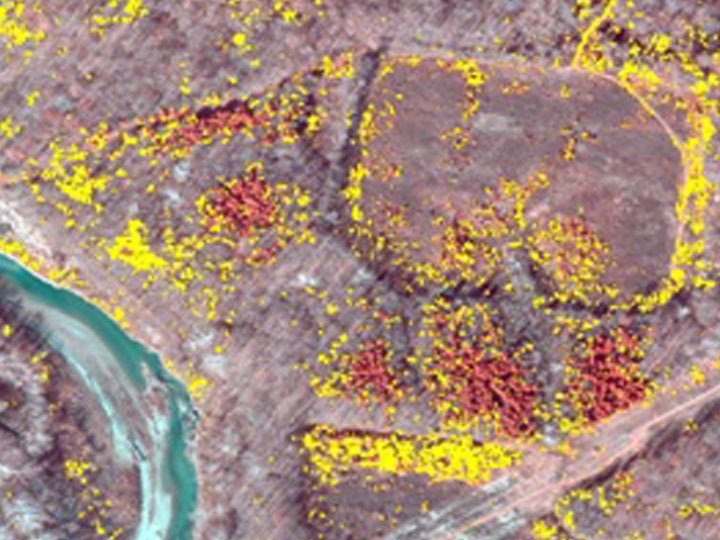Five Rivers Invasives Remote Sensing


PROJECT SNAPSHOT
Project Type
Non-Bank ProjectLocation
Ohio | Montgomery CountySolution
Natural Resource RestorationEcological Setting
Grasslands, Prairies, & Upland ForestsFive Rivers MetroParks in Dayton, Ohio, had been removing European buckthorn from 1,500 acres of its preserves for two years when they asked RES to map their progress, and work to be done, with strategically timed high-resolution aerial imagery.
The imagery was foundational in helping develop a habitat management plan to enhance ~15,500 acres of natural area from the ecological degradation threatened by invasive species.
To understand and prioritize strategies for future buckthorn management, RES collected aerial imagery at 6-inch resolution with our multi-spectral sensor. The flight was strategically timed in November to collect images during leaf-off tree canopy conditions while understory buckthorn still retained its green leaves.
NAIP images were also collected to enhance the image classification method, and a hierarchal object-oriented, supervised classification approach was applied to map the distribution of invasives.
Key steps in the approach were “just-in-time” image acquisition and object-based classification methods. Image segmentation methods were used to categorized image pixels into meaningful objects based on spectral signatures, image texture, and other characteristics.
Using field data, oblique imagery we collected and other data sources, RES built a model to classify and create maps of the invasive species. This project demonstrates that high resolution photography and remote sensing can be highly effective, cost-saving tools to managing invasive species.
